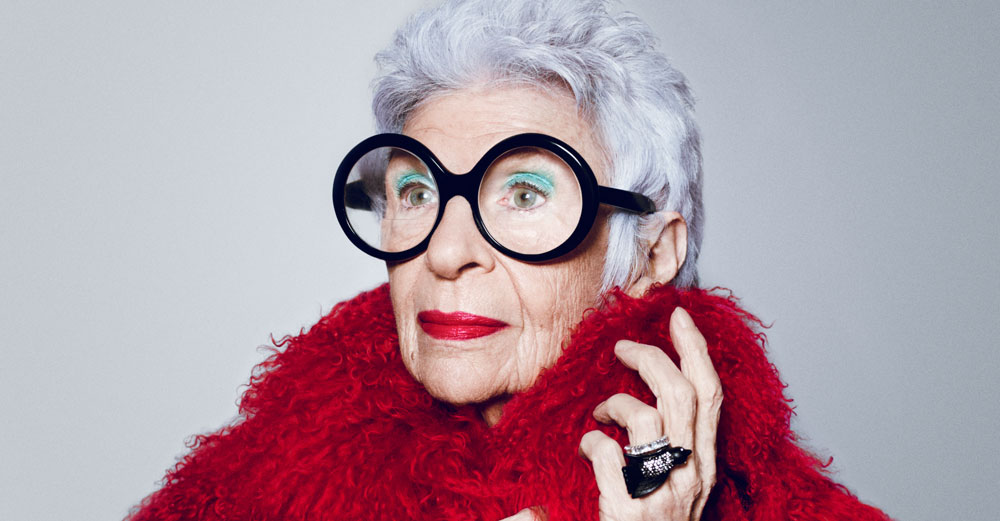
Albert Maysles’ 2015 documentary film IRIS provides a portrait of the nonagenarian fashion icon, Iris Apfel. Filming inside Iris’s apartment, Maysles presents us with many images of animal representations. The animals are artificial reproductions of the ‘real’ thing. They are aesthteic objects concerned only with style; carriers of pleasure rather than carriers of meaning. Taking Whitney Rugg’s analysis of kitsch, we can see how these representations fall in this categorisation, as they are “a source of sheer entertainment in opposition to the elevated perception generated by high art.”[1] It is by establishing their kitschness that Maysles shows how animal identity can be constructed as an articulation of our own, using as emblems of Iris’s creative, free-spiritedness.
One instance of this that is particularly striking is when Iris introduces us to her ostrich-bar. Maysles uses a medium shot of the ostrich’s body, her head and feet cut out the frame. Iris moves into this shot, overtaking the ostrich as the focus. She states, “That’s Gussy. Gussy is a bar. Her wing goes up and her belly is full of booze,” lifting the wing to expose the interior.
Iris is conscious of how animal identity can be constructed as an articulation of our own, as Gussy truly lives up to her namesake, a kind of gimmick, something embellished with features that attract attention. Notably, this occurs when Iris enters, her voice the only sound, establishing her interaction with the animal as the focus of this shot. Immediately the audience produces a link between the kitschness, the sheer entertainment prdocued by the aesthetic of this animal, and Iris.
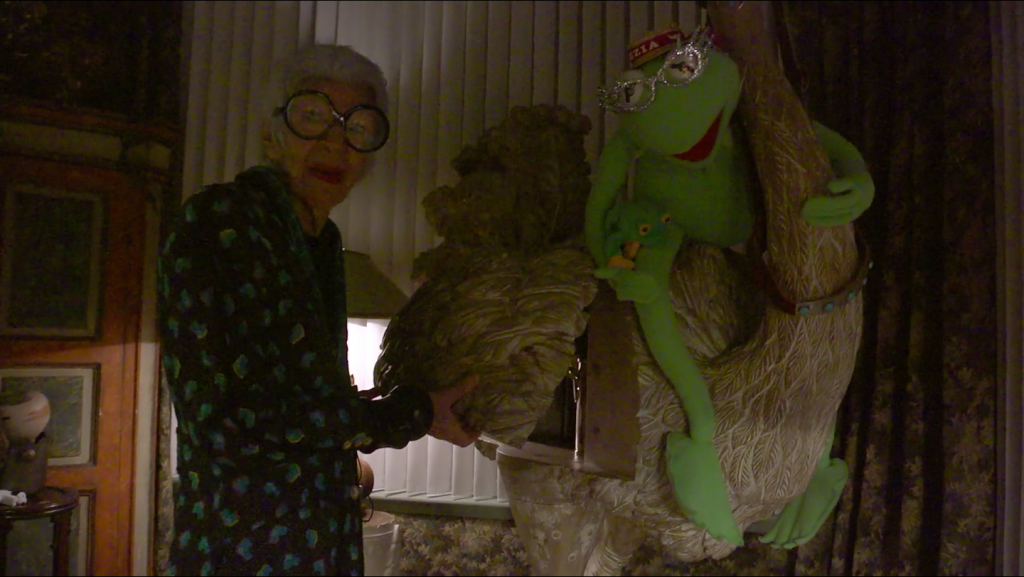
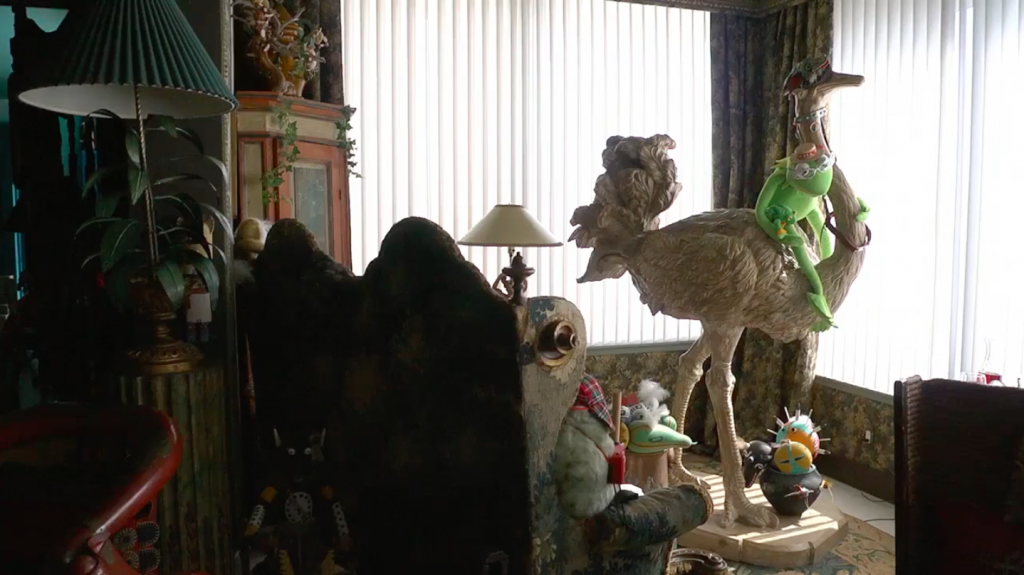
The Kermit doll upon Gussy’s back adds to the playful animal imagery of this scene, as it wears a ostentatious eyewear, echoing Iris’s own aesthetic. This mirroring is accentauted further as the alighnment between Iris and and Kermit doll is established by their heads turned towards the camera. The audience can see how both these animals parrallel Iris’s aesthetic: the inconcgruity between Gussy’s exterior and interior turns her into a carrier of pleasure; Kermit is dressed like Iris, and rides Gussy, which only adds to the kitsch and makes for a more playful image. In this way, the animals extend beyond a metaphor for Iris. By parralleling Iris in her aesthetic and playfulness they show how animals are used, like art, as a mode of self-expression.
In the next shot Maysles dramatically alters the colour and lighting, from a neutral colour scheme and dim lighting, to bright red emitted from a light-up candy cane on the mirror next to Gussy and Kermit. This alteration evokes ideas of Christmas or carnival, ideas of festivity and excitement that work in conjunction with the low-angle shot of the heads to attach an unavoidable sense of wonderment, playfulness, and excess to the representation of these animals. Iris no longer in shot, Maylses uses the established metaphor to make the animals accentuate the representation of her life as pure celebration.
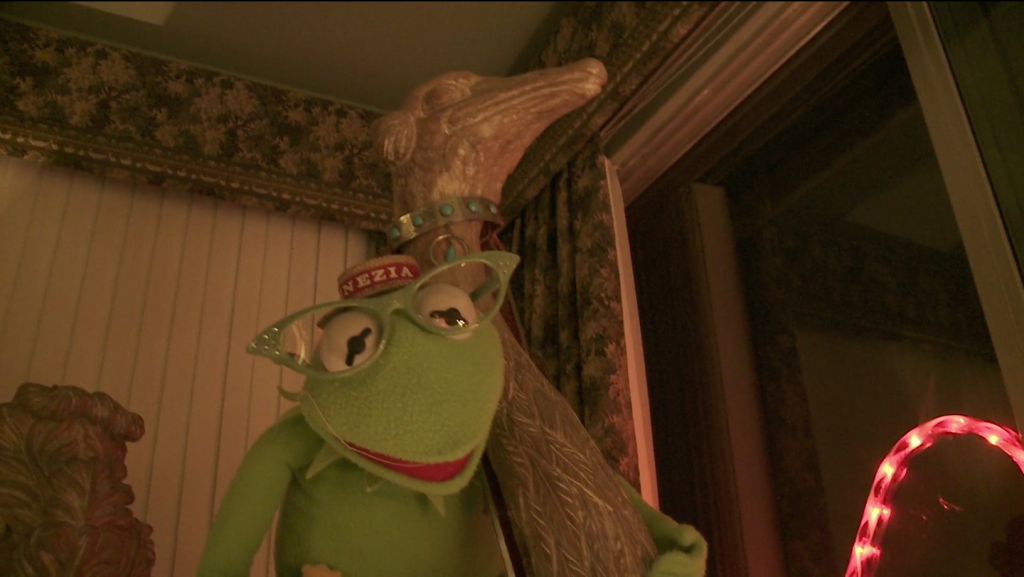
For both Gussy and Kermit, their representations as kitsch objects transforms them so that any notion of the ‘real’ animal with a distinct identity is entirely lost. They become part of the film’s focus upon how Iris constructs her own identity through an aesthetic play and surface experimentation. The way Maysles focuses upon them as kitsch objects, and how their conscious stylisation connects to Iris, exemplifies how humans manipulate cultural representations of animals to give them new meaning. This speaks directly to the way Maysles wants the audience to see how, like Iris, we can all construct a playful identity for ourselves through an experiment with stylisation. The idiosyncratic refashioning of the animal body echoes and accentuates Maysles’ portrayal of Iris as an eccentric, turning Gussy and Kermit into an articulation of her uniqueness.
It is by concerning himself with the playful representations of animals, by imbuing them with a kitsch sensibility, that Maysles constructs, not only an identity for Iris, but shows how animal identity can be an articulation of our own. Through his use of lighting and the aesthetics of this scene the animals become an articulation of Iris and her philosphy of life which underpinns the film: “more is more and less is a bore.” What is most striking is how these images, seemingly so depthless in their concern with aethetics, are saturated with meaning when Maysles binds them to something so utterly extensive as identity.
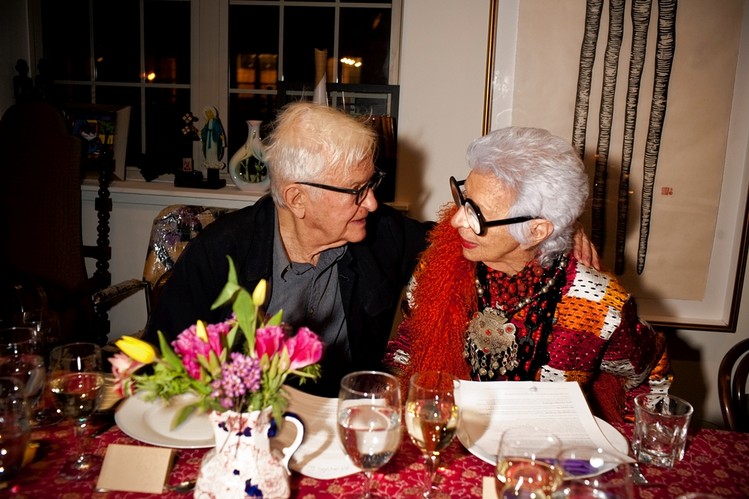
Director, Albert Maysles with Iris Apfel.
Endnotes
[1] Whitney Rugg, Kitsch, <http://csmt.uchicago.edu/glossary2004/kitsch.htm> [accessed 14 January 2017] (para. 1 of 13).
Bibliography
Rugg, Whitney, Kitsch, <http://csmt.uchicago.edu/glossary2004/kitsch.htm> [accessed 14 January 2017]